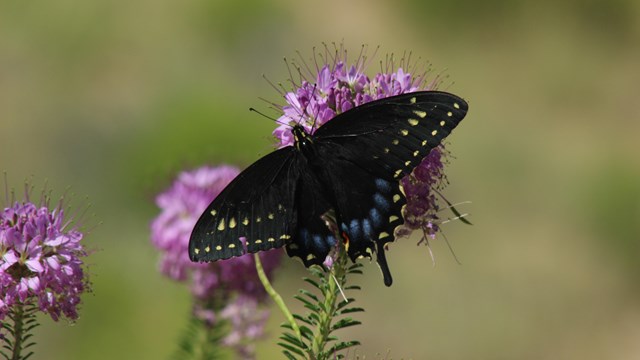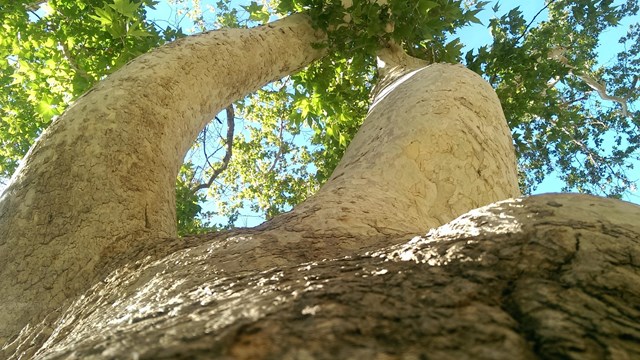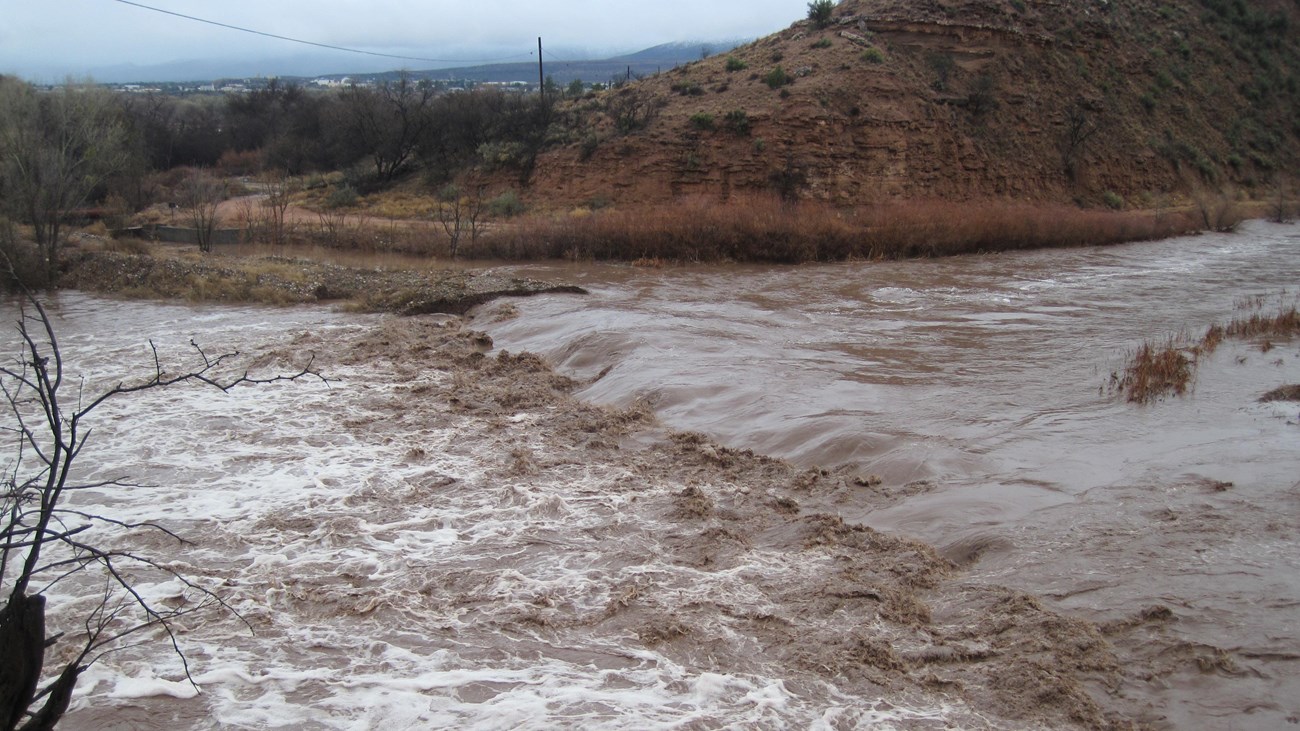|
Montezuma Castle National Monument encompasses 826 acres and lies in the Verde Valley at the junction of the Colorado Plateau and Basin and Range physiographic provinces. Although the climate is arid with less than 12 inches of rainfall annually, several perennial streams thread their way from upland headwaters to the Verde Valley below, creating lush riparian ribbons of green against an otherwise parched landscape of rolling, juniper-covered hills. The monument contains numerous species of plants, such as mesquite, catclaw, and saltbush, which have adapted to life in an arid environment, but, due to the micro-habitats provided by the riparian corridors, also hosts populations of moisture-loving plants such as monkeyflower and columbine. The tall, large-leaved mesic species of trees, such as sycamore and cottonwood, found only in the riparian corridors, stand in stark contrast to the xeric species found on neighboring lands. The unique aquatic habitat found in Montezuma Well, a collapsed limestone sinkhole, contains organisms found nowhere else in the world which have evolved in response to the unique mineralization of the water. |

Animals of Montezuma Castle
Explore some of our awesome animals that call this place home. 
Plant Life at Montezuma Castle
Grow your knowledge of our unique plants along the Montezuma Castle trail. 
Environmental Factors In The Desert
Learn about environmental factors in a desert ecosystem. |
Last updated: February 3, 2021
